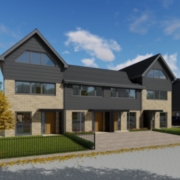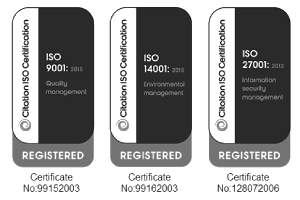Is low-carbon modular housing an answer to UK housing need?
Ray Noble, Operations Director-UK for WElink Group, spoke to APSE about low-carbon and efficient solutions to the current housing crisis that the UK is facing.
The UK population has reached 65 million people; current housing solutions are ineffective to tackle the housing deficit the UK is facing. The housing sector needs fast and effective solutions to address the demand. Low-carbon modular homes offer just that; speed and efficiency in delivery, as well as energy efficiency.
However, the real game-changer is delivering housing on an industrial scale, which is what we at WElink are beginning to deliver. Founded in 2007, WElink’s roots are in renewable energy with extensive experience of solar project development around the world. WElink has today evolved into a leading innovator, developer, financial aggregator, and facilities manager of modern, energy-efficient modular construction.
Our strength comes through working in collaboration with the world’s leading building materials company, China National Buildings Material (CNBM). Through their innovation arm, they have combined success in renewable energy to create modern building structures and community dwellings which are not only low-carbon and efficient in their construction, but also low-carbon and efficient in their application and operation.
£2.5bn innovative housing deal
The industrialisation of house building offers a real opportunity to reach a market that traditional house builders have shied away from; affordable, local authority and housing association homes. To this end, WElink announced in December 2016 its first innovative joint venture deal in the UK with north-west housing association Your Housing Group. The £2.5bn deal is to deliver 25,000 homes over the next five years.
Our ambition is to seek further similar deals in other parts of the UK, which will source homes from potentially six strategically-based WElink factories around the country.
Steel Frame Construction
Our homes are constructed from British-produced light-gauge steel (60% of which is recycled in the UK), using a modern method of construction with an impressive strength to weight ratio and great design flexibility. The advantage of using galvanised steel is that it is 100% recyclable and can be recycled indefinitely. Steel doesn’t warp, split or crack, and light gauge steel is light and easy to handle.
The frame design is developed by engineers in line with local architects’ design, and the various elements are fabricated off-site in a controlled factory environment. Lengths of light steel are used to frame the house in much the same way as timber studs in timber frame houses, and light steel is also used for floor joists, and the tracks, studs and rails for internal partition construction. The frame is fabricated in large transportable sections, which include the boarding that forms the water-tight shell. We are developing our solutions towards installing the first fixed electrics and plumbing, and internal finishes before the frames leave the factory.
The completed flat-pack frame is delivered to site and assembled with ground works and sub-structure already in place; erection of the frame to a water-tight stage is completed in less than two days. Roofing and external facing can get started as soon as the frame is erected, whilst inside the second fixed electrics and the plumbing of bathrooms and kitchens is undertaken. This construction and assembly process can thus overcome the skills shortage within the housing sector.
Building Communities
We aren’t just building homes though – we are building communities. However, these communities will live in low-carbon, energy-efficient homes where resilient composite material panels and solar panels are fitted as standard. Our homes are up to 75% energy independent and can save the customer money on their utilities as well as helping to tackle fuel poverty across the UK.
By manufacturing our homes off-site through a production-line process, we are able to precision assemble homes on a large scale. This industrialisation strategy improves efficiency, enables a reduction of transportation, minimises material storage on-site, and capitalises on assembly through reduced overheads and speed of occupation. Our solution can be deployed up to 10 times faster than traditional construction methods.
Innovation
The house building sector has been static in terms of technological advancement for a number of years. We are extremely conscious of the changes in peoples’ lifestyles and that is why we are not just designing housing types and products for today and for the next few years; we are also investing in R&D innovation for the next few decades. We have located our Innovation House and R&D centre in Berkeley, Gloucestershire, at the newly-developed Gloucestershire Science and Technology Park, formerly the world’s first commercially operated nuclear power plant.
The Park has been spearheaded by South Gloucestershire and Stroud College, who are launching their University Technical College this September for students interested in Advanced Manufacturing, Digital Technologies and Cyber Security. WElink has a strong relationship with the College, both to take work experience/apprenticeships as well as our team offering seminars to students to inspire the next generation of innovators and engineers.
Barriers to delivering the homes we need
In our recent response to the Housing White Paper, WElink have urged the Government to review and consider two areas in order for companies like us to deliver the homes the UK desperately needs. The first was around local authority planning departments. We recognise the issues with capacity in local authority planning departments, with the reduction in personnel following the financial crash of 2008, when new developments began to fall. This, coupled with the significant funding squeeze from Government, led to local authorities to reduce planning departments before reductions in vital frontline services.
Therefore, we have urged the Government to consider that any changes to the planning system should take into account planning department capacity issues and perhaps offer additional funding to support local authorities in delivering local housing needs.
Secondly, we have found that rules governing local authority procurement to be a hindrance in the goal of delivering more homes. The stringent and laborious process and rules can often restrict innovative developers from engaging with local authorities. We have urged the Government to review procurement rules to ensure that they provide a route for local authorities to enter into agreements with developers more easily and quickly.
In conclusion
We believe that low-carbon modular homes are an answer to meeting the UK’s housing needs. Innovation is also key to meet the needs of the population of the day. WElink is leading on both fronts and we look forward to working with local authorities across the UK in the years to come to deliver the future.
For more information, visit the WElink website.


.png)



.png)